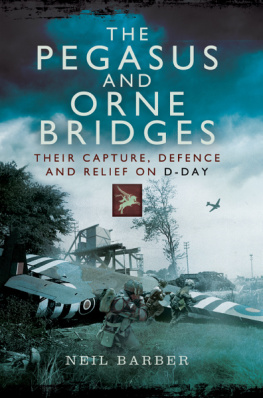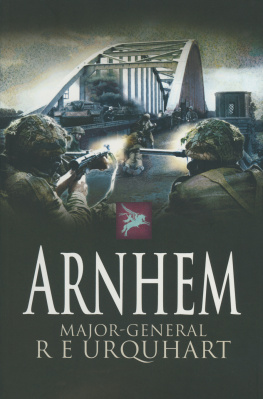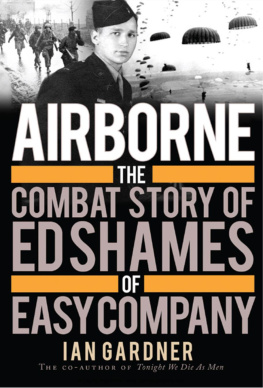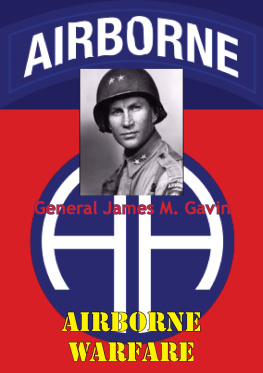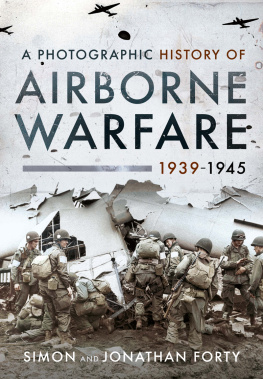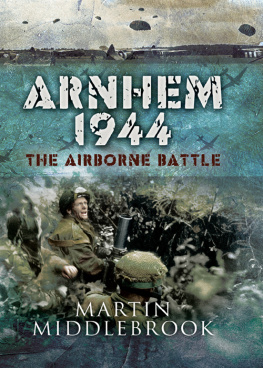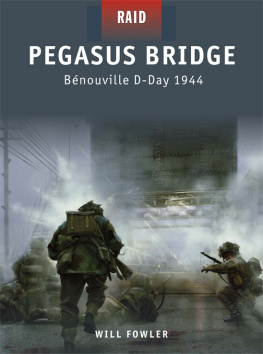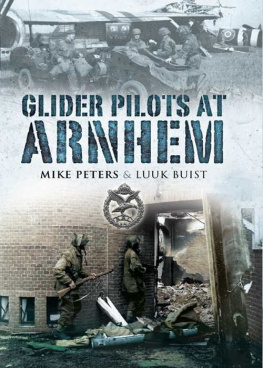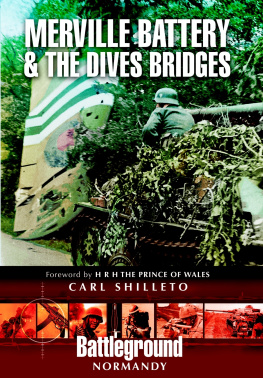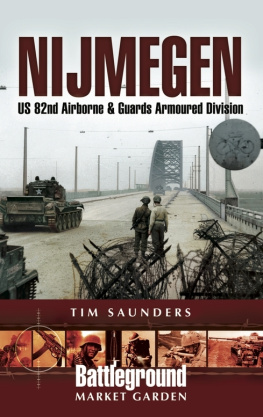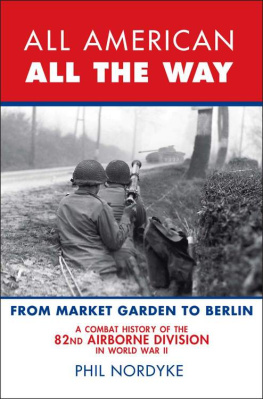First published in Great Britain in 200
and reprinted in this format in 2014 by
Pen & Sword Military
An imprint of
Pen & Sword Books Ltd
47 Church Street
Barnsley
South Yorkshire
S70 2AS
Copyright Neil Barber 2009, 2014
PAPERBACK ISBN: 978 1 47382 274 0
PDF ISBN: 978 1 47383 125 4
EPUB ISBN: 978 1 47383 009 7
PRC ISBN: 978 1 47383 067 7
The right of Neil Barber to be identified as Author of this work has been asserted by him in
accordance with the Copyright, Designs and Patents Act 1988.
A CIP catalogue record for this book is
available from the British Library.
All rights reserved. No part of this book may be reproduced or transmitted in any form or by
any means, electronic or mechanical including photocopying, recording or by any information
storage and retrieval system, without permission from the Publisher in writing.
Printed and bound in the UK
by CPI Group (UK) Ltd, Croydon, CR0 4YY
Typeset by Phoenix Typesetting,
Auldgirth, Dumfriesshire
Pen & Sword Books Ltd incorporates the Imprints of Pen & Sword Aviation, Pen & Sword
Family History, Pen & Sword Maritime, Pen & Sword Military, Pen & Sword Discovery,
Wharncliffe Local History, Wharncliffe True Crime, Wharncliffe Transport, Pen & Sword
Select, Pen & Sword Military Classics, Leo Cooper, The Praetorian Press, Remember When,
Seaforth Publishing and Frontline Publishing
For a complete list of Pen & Sword titles please contact
PEN & SWORD BOOKS LIMITED
47 Church Street, Barnsley, South Yorkshire, S70 2AS, England
E-mail:
Website: www.pen-and-sword.co.uk
In memory of my friend, Gary Cooper
Contents
The Publishers have included several historically important wartime photographs that cannot be reproduced to our usual high standards. It was felt that they were of sufficient interest to the reader to be included.
Foreword
J une 6th 1944 saw the successful capture by D Company 2nd Battalion, The Oxfordshire and Buckinghamshire Light Infantry of the bridges over the Caen Canal and the River Orne followed by their defence by the 7th (Light Infantry) Battalion, The Parachute Regiment. As you read this brilliant account of the planning of this assault by the 6th Airborne Division and the action that took place in the Ranville area, you will find it difficult to put this book down. With each chapter you will marvel at the bravery and dedication of the men who tell their story of what happened to them during the battles they encountered on 6 June 1944, including the arrival of the seaborne units into the 6th Airborne Divisional area.
I congratulate the author for his devotion in producing such an outstanding, detailed account of the capture of the Pegasus and Orne Bridges, their defence and their relief on D-Day.
Major Jack Watson MC.
13th (Lancashire) Battalion, The Parachute Regiment
Preface
T he capture of the Caen Canal and River Orne bridges on D-Day remains one of the most celebrated episodes of the Second World War. Much has been written about the Pegasus Bridge Operation, so why another book? The simple reason is that I wanted to know more. For all of the publications in which the operation features, there are only two books specifically dedicated to the action, these being Stephen Ambroses Pegasus Bridge (1984) and The Pegasus Diaries (2006) by Major John Howards daughter, Penny Bates. They are both superb, and naturally concentrate on Howard and the exploits of his Coup de Main force.
Where this book largely differs from those, and most others, is that there is more information on the actions of the various formations involved in the defence of the immediate area surrounding the bridges, from Benouville to Ranville on the 6 June 1944. The text follows the thread of the operation from inception to completion and therefore traces the training and actions of the Coup de Main party and the 7th Parachute Battalion, who fought a truly valiant battle in Benouville. In order to address the defence of the Ranville area, the 12th and 13th Parachute Battalions and other Airborne units feature from the main parachute drop onwards. Then there is the arrival of the Commandos and the lesser-known actions of the Seaborne Engineers whose presence in Benouville undoubtedly influenced the enemy actions there during the afternoon of D-Day. There is also a short appreciation of the efforts of the French intelligence gathering organisations, particularly the Century Network, whose contribution in the years before D-Day cannot be underestimated.
With regard to the attention given to the capture of the bridges, this book is no different, although I have attempted to address a wider range of men within the party, be it the Oxf and Bucks, the Glider Pilots or the Airborne Engineers.
With so much conflicting information concerning timings, whether personal or officially recorded, I have deliberately placed the emphasis on the chronology of events. The method of doing this has been to explore in greater detail and over a wider area. This has proved fruitful in most cases, but not all. For example, the movements of Brigadier Nigel Poett provide invaluable clues as to the sequence of events (and therefore timing!), but those of Lord Lovat certainly do not! Consequently, there are matters that have proved to be impossible to resolve, but I am optimistic that with subsequent feedback, some of these may well be clarified.
* * *
The influence of the 6th Airborne Division in this area of the Orne remains to this day, with museums, memorials and of course cemeteries. Yet it is more than that. There is a tangible bond between the local population and the parachute, glider, commando and other veterans who, although their numbers slowly diminish, travel out each year to meet old friends and pay their respects to comrades who were not so fortunate.
This is their story, the soldiers eye-view of what they had to do to make this operation, and D-Day, a success.
Acknowledgements
A fter five years, there are quite a lot of people to thank, and if I have omitted anyone, please be sure that I am very grateful for your assistance.
I am privileged that Major Jack Watson MC, formerly of the 13th Parachute Battalion and now President of the Airborne Assault Normandy Trust, has written the Foreword. Jack, it has been a pleasure to meet you.
I shall always be indebted to the late Colonel David Wood and the late Geoff Barkway, two absolute gentlemen, for vetting the drafts with regard to the Oxf and Bucks and glider pilot input, and to Michael Pine-Coffin, grandson of Colonel Geoffrey Pine-Coffin, for sharing his expertise on the 7th Parachute Battalion, especially when he is preparing books of his own on the complete history of the battalion. I hope it hasnt delayed you too much!
I am especially grateful to Hugh Ambrose for allowing me to quote from the interviews carried out in 1984 by his father, Stephen, during research for his classic book, Pegasus Bridge.
To Penny Bates (daughter of Major John Howard) for allowing me to quote from her marvellous Pegasus Diaries. Of the Oxf and Bucks group for their help and encourage ment, Barry and Diane Parr, Barry and Michael Tappenden, Ted Barwick, Mike Holland, Geoff Baulk (curator of the Oxf and Bucks Museum Section at Bletchley Park), Joan Packwood, Danny Greeno and especially the late Dennis Edwards. With regard to the gliders, Jim Wallwork, Peter Boyle, Phoebe Grant and Bob Randall. To Eric Barley (and Yves Fohlen) for allowing me to quote from their book Para Memories.
My gratitude also goes to Sir David Willison, John Hoare and Brian Raymond Guy of 17 Field Company Group RE.
Others I am indebted to include Brigadier-General Julian Thompson, Major Joseph Molyson, Steve Bennett, John Goddard, Michael W Bowman, Cincinnati Sean, Ian Nobby Clark, Felix Jackson, Laurie Milner, Steve Clare, Mick Mockford, John Webber, Jim Clark, Stephen Wright, David Brook, Silvia Atkinson, Michael Massy-Beresford, Dick Goodwin, Bill Mawson and Walter Wright. Also to Major Phillip Pritchard, Stan Scott, Jimmy Synnott and the late Eddie Simms.
Next page
